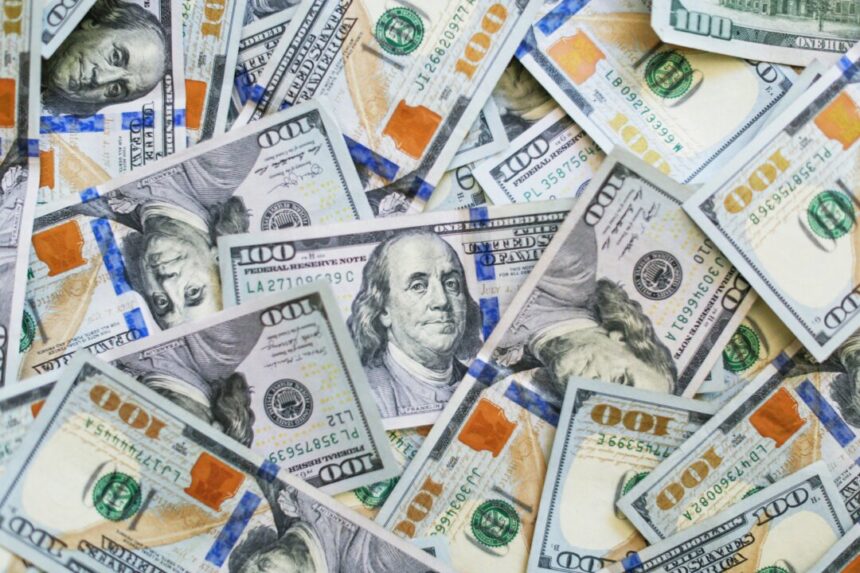Commentary
The inflation of the last three years has been devastating for households and businesses running on small margins. It’s all the more frustrating that during those years, we kept being told that it is transitory, softening, calming, cooling, settling down, and essentially not much of a problem anymore. We look back and know now that it was never true.
In reality, three years is a very short time for a major currency to lose at least a quarter of its domestic purchasing power. In the postwar period, it took from the war’s end until 1965 for that to happen. This was also the loss from 1982 to 1992, from 1992 to 2000, and from 2001 to 2012.
That’s hardly a record of stable money but it is manageable, from the standpoint of accounting and psychology. What were used to it.
What’s happened to the dollar over three years is a more extreme loss than anything experienced since the late 1970s. Back then, the dollar lost a quarter of value between 1975 and 1979, which roughly fits with current experience.
Keep in mind that the current numbers are likely underestimated because they exclude interest rates and completely miscalculate categories like rent and health insurance (do you believe that health insurance costs less today than in 2018?). Moreover, the inflation index cannot account for the full impact of shrinkflation, quality changes, and hidden fees.
In any case, and even using conventional numbers, the bad news is that the dollar of 1913 today has a purchasing power of about 3 cents.

Any purchasing power loss sets in motion a gravitational pull against living standards. It means working harder, scrambling more, adding income to the household revenue stream, and otherwise never quite getting ahead. It also eats into savings by punishing rather than rewarding thrift as should be the case.
But for this to happen in such a short period of time from 2021 to the present is extremely damaging to economic structures. It also damages our understanding of the world around us.
You know this feeling. Not long ago, when you were out shopping, you had a sense if something was a bargain or a ripoff, overpriced or underpriced, something to snap up or leave on the table. Now everything seems too expensive but you cannot know for sure.
I see people all the time at the store who pick up an item, look at the price in shock, pull out their phones to price compare, discover that it is pretty much in line with market standards, decide whether they must have the thing, and then reluctantly put it in their cart with some element of disgust.
Inflation turns the once-happy experience of being out and about in the commercial marketplace into a grind and an annoyance. For many people, it is utterly terrifying because they are having a hard time staying ahead no matter what.
Have you ever been in a foreign country, using an unfamiliar currency, and attempted to haggle with a vendor on the street? It is extremely disorienting simply because you are out of your element. You don’t know if you are getting a good deal or being pillaged. This is because the prices you are being quoted are detached from any context that you know.
Inflation brings this problem home. Suddenly everything feels unfamiliar, and you lose your footing. Societies that have dealt with extreme versions of hyperinflation like Weimar in 1922 utterly fall apart. We are nowhere close to that problem but still experience elements of the results. Even inflation on our current level can usher in dramatic social/cultural changes: it was the inflation of the 1970s that converted U.S. households from one income to two (and now three).
Now imagine this problem from the point of view of a business manager. Every good or service you need for your business is nothing but up in price. It blows up the accounting ledger. And your employees are demanding more, not only to pay their own bills but also because they know of another firm vying for their services.
Well-heeled and highly capitalized businesses fare much better in this environment. Those living off credit, paying high rates, and running very thin margins lose out to the competition that is in a better financial position. The pain is intensified given that in the year before the great inflation began, many small businesses were forcibly closed by government in the name of stopping a virus.
Having barely gotten through that period, they then faced a barrage of other absurdities. They dealt with capacity restrictions, supply-chain breakages, and then mask mandates on employees and customers. Following that, there was a looming threat, emanating from a Biden administration edict that was later reversed by the court, to make their employees take an experimental shot.
The wounds of this period are still obvious everywhere but life didn’t return to normal. Instead, this inflation began that hit the core of business operations in other ways.
Every business facing inflation has to figure out the key issue: how to absorb the blow. End-user consumers must face higher prices but how high can they go before a quiet revolt begins to happen? Contrary to what you hear, no business wants to raise its prices on the consumer (there are some exceptions for luxury goods and so on but this is hardly the norm). They do not like making their customers unhappy.
There have been some innovations in how this hot potato gets passed on. It can manifest in various ways, such as smaller portions, lower-quality ingredients, or hidden fees. Many restaurants have found that they can easily increase prices on beverages like beer, wine, and cocktails because customers tend to purchase them without closely scrutinizing the cost.
While this tactic worked for a while, it is not a sustainable solution. The public has become more aware of these fees, leading to frustration directed towards businesses rather than the underlying inflation. The Biden administration has even spoken out against these fees, threatening regulatory action.
Prices play a crucial role in our daily lives, shaping our consumption habits and guiding our decisions. For example, imagine if a roll of paper towels cost $15 – it would likely prompt a shift towards more cost-effective alternatives like cloth towels. This example highlights the importance of prices in influencing behavior.
In a complex economy, prices act as information systems that enable rational resource allocation. Without them, economic chaos ensues, as evidenced by failed socialist experiments. Price controls, minimum wage laws, and inflation all disrupt the price system, hindering economic rationality and productivity.
Inflation erodes the functionality of prices, diminishing their ability to guide decisions and facilitate communication. This undermines economic vitality, especially coming on the heels of pandemic-related lockdowns. The long-term consequences of this economic disruption will be significant.
The opinions expressed in this article are those of the author and do not necessarily reflect the views of The Epoch Times. Please rephrase.
Source link








